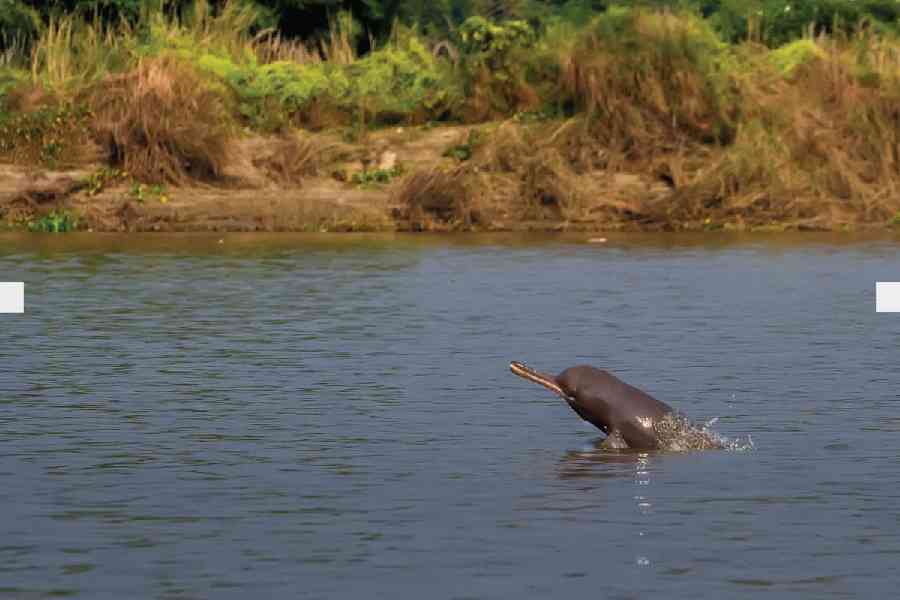A group of researchers will study the noise levels in the Hooghly to determine how habitable the river is for one of its most intelligent resident species.
The river is home to a stable population of the Gangetic dolphin (Platanista gangetica), an endangered species according to the International Union for Conservation of Nature.
Dolphins rely heavily on their sophisticated echolocation system, using sound waves to navigate, locate prey and communicate with one another. Human activities like shipping, underwater construction and offshore drilling introduce noise into the waters, which can have an adverse effect on these mammals.
“The study will look into the noise levels in the Hooghly — mainly the noise that comes from vessels of various sizes and other activities on the surface. Underwater sound recorders will be used to map the soundscape in the river. The aim is to be able to make a distinction between the different sources of sound,” said Anurag Danda, an environmentalist now serving as director, Sundarbans Programme, WWF-India, the NGO that will conduct the study.
“The objective of the study is to identify a sound threshold. Sound beyond that limit would interfere with the navigation system of the dolphins. If the ambient noise in the water overwhelms the sounds dolphins emit, it will be challenging for them to locate prey and communicate effectively,” said Danda.
The project details were discussed in a meeting on Friday, convened by the state transport department. The West Bengal Transport Infrastructure Development Corporation, which works under the transport department, is co-funding the project, along with the World Bank.
Representatives of WWF-India, officials of the state forest department and a scientist from the Central Pollution Control Board were among the participants.
After the completion of the study, a report will be submitted to the transport secretary and a copy will be shared with the chief wildlife warden of Bengal. The Gangetic dolphin is the national aquatic animal of India.
The estimated duration of the project will be 30 months and it will entail a cost of around ₹3 crore, said sources.
Inland waterways have been accorded a central role in maritime development in India. The National Waterways Act 2016 has declared 111 rivers or river stretches, creeks and estuaries as National Waterways that will see a significant rise in traffic and cargo volume.











